The main objective was to live with the most primitive of the island, those who still live like their ancestors in the jungle, the small nambas. Name given to the tissue that men cover their genitals, while women cover it with a skirt of dried banana leaves.
It’s a step back in time. Naked people, only dressed in their nambas, introduce me to the village chief, Kasel. This represents justice and peace and is the spokesman for his people. His word is law.
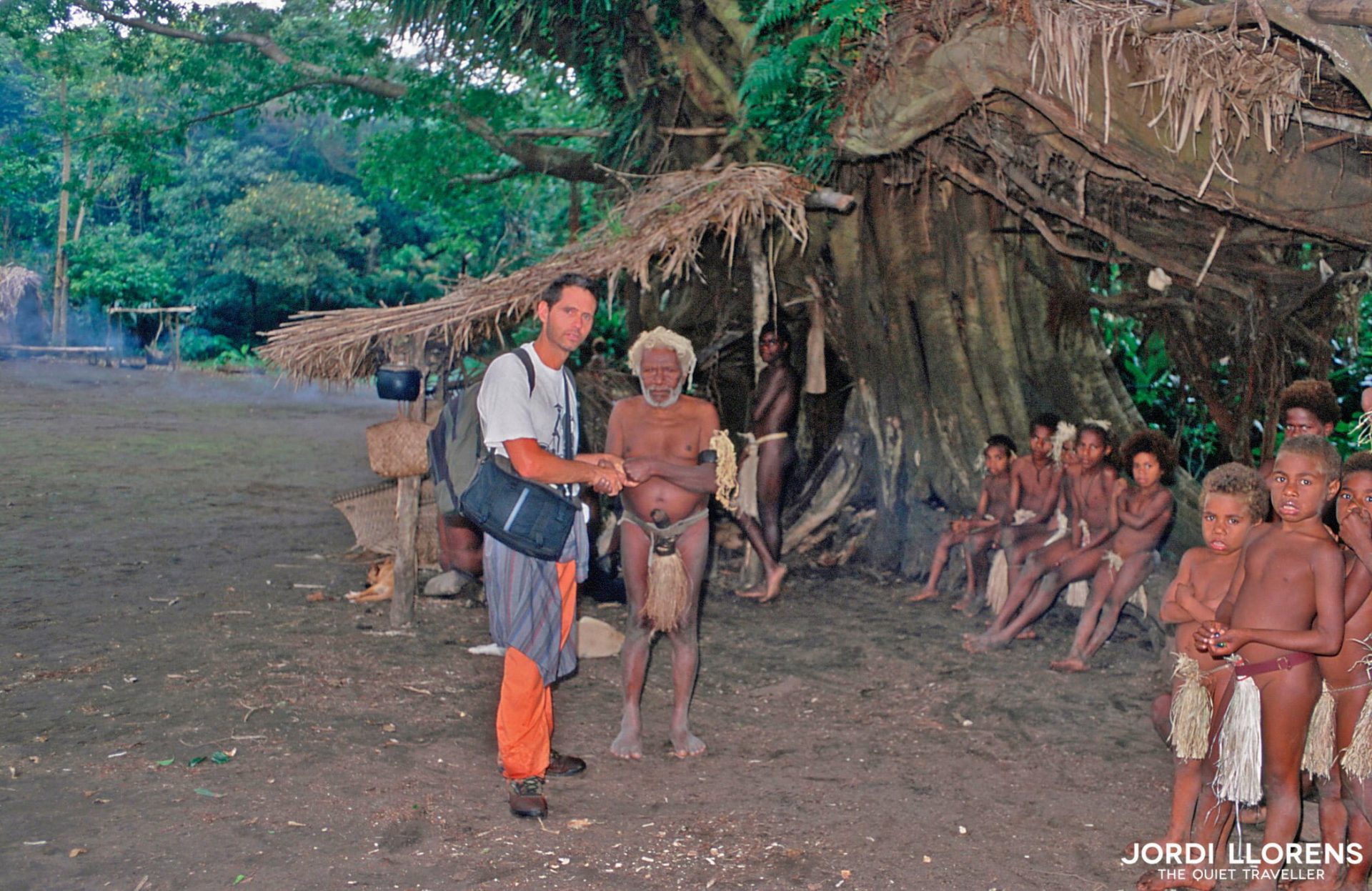
Chef Kasel greets me at the great nakamal
Suddenly, to welcome me, a hundred people begin to dance at a fast pace. In the middle the men and behind the women, all together dance stomping, spinning from one side to the other. The earth seemed to sink. It was quite a surprise after the fatigue of having gotten there and the humidity that lit the environment.
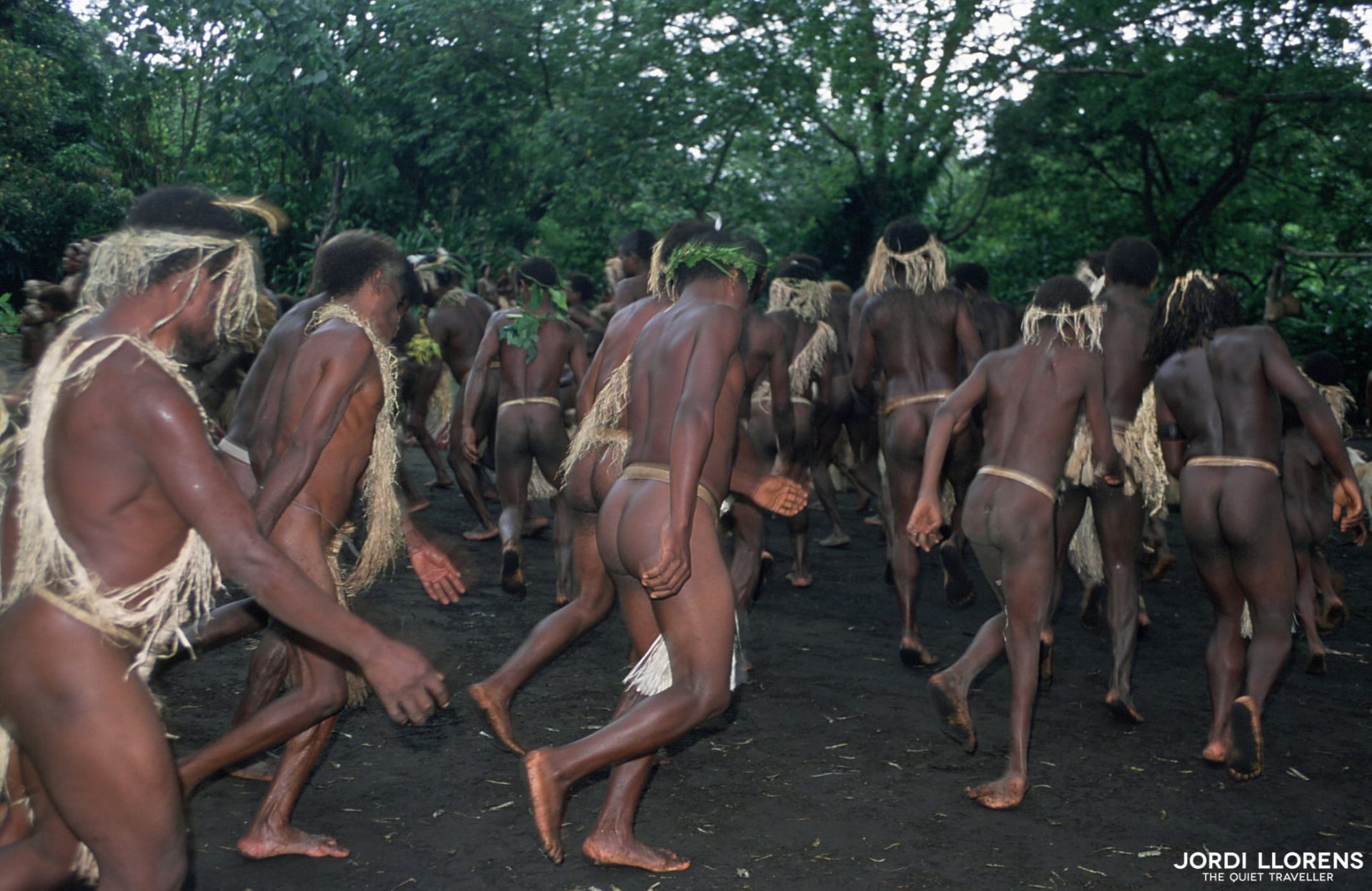
They received me dancing
Because of their dark skin pigmentation, average height, and curly hair, Melanesians were once classified as a Negroid group, but recent studies link them to Papuans and even Aboriginal Australians.
75 percent of the population lives in rural areas in houses built with logs, bamboo and palm leaves and they have the nakamal, an open space -like a square- as the special place where they celebrate all their ceremonies and meetings.
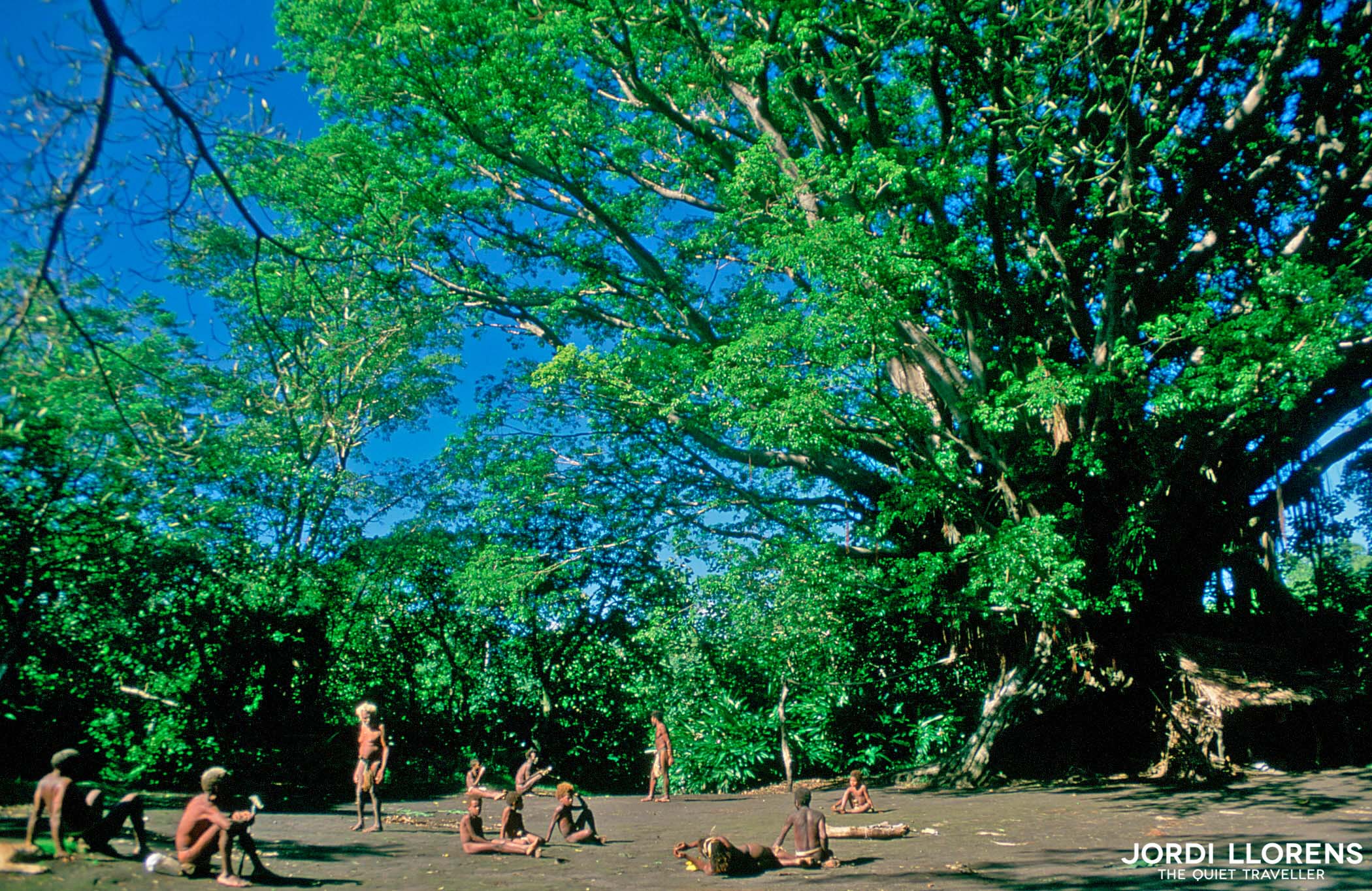
The great square they call nakamal
The house, the skirt and the food, everything is related to the earth, the sky and the sea. Natural medicine is also part of their traditions and each plant is assigned its different healing effects.
Women and gastronomy
The average lifespan of women is 60 years, less than men because they have a harder life. And they have an average of six children per family.
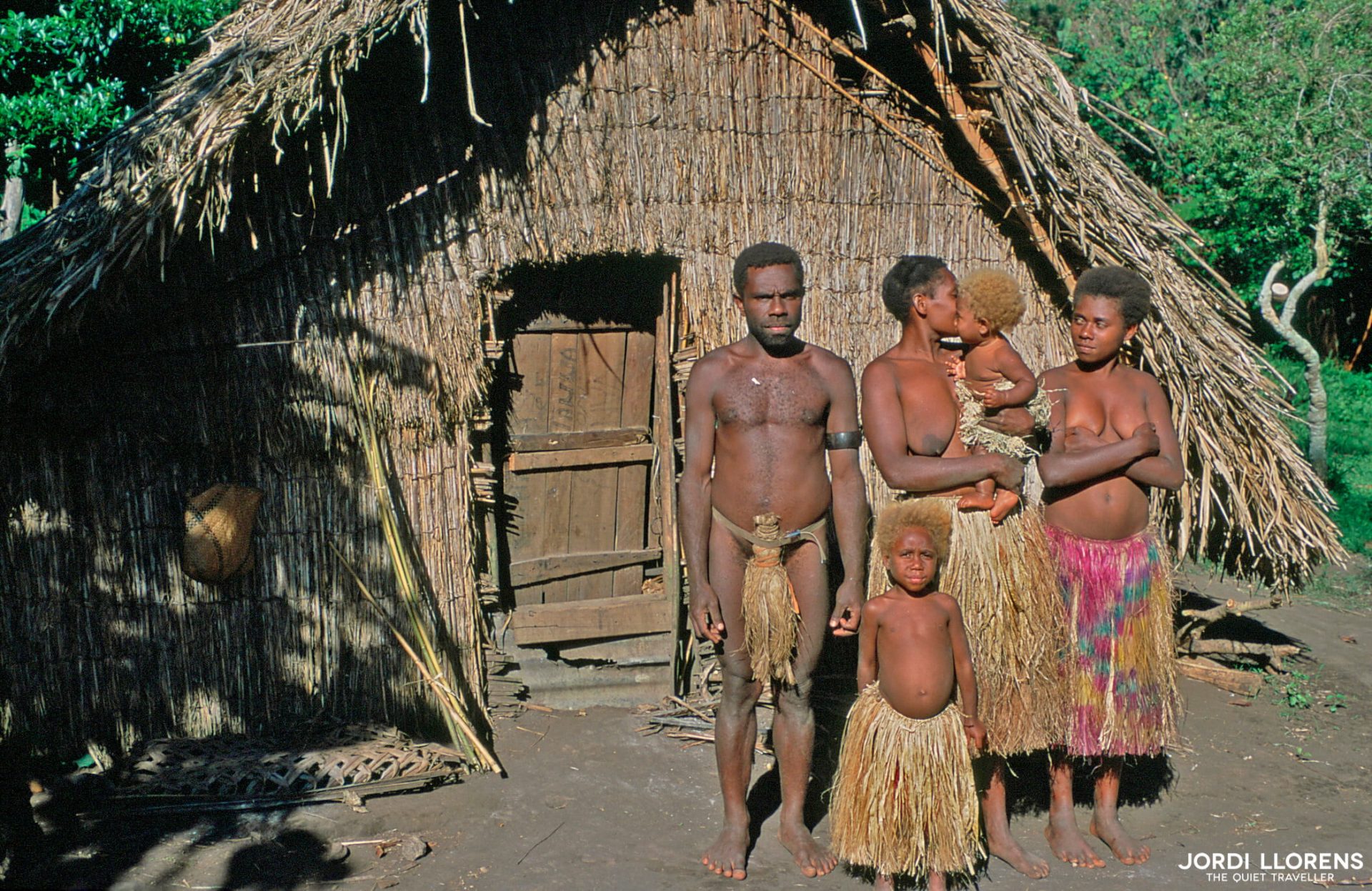
Little Mary’s family
The hardest work is always done by women. They spend more than ten hours away from home tending the garden and the man spends the same hours fishing, hunting, crafting and lounging in the nakamal, drinking kava and discussing what they have done during the day. Generally, it is the woman who, in addition to the garden, takes care of cooking, cleaning, taking care of the children and carrying water.
One of her favorite dishes is taro (a tuber that guarantees food for the peoples of the Pacific). First they crush it on a stick, put it in banana leaves and coconut milk, then wrap it with the same leaves and put it on the fire with hot stones. Not bad at all, maybe a little bland.
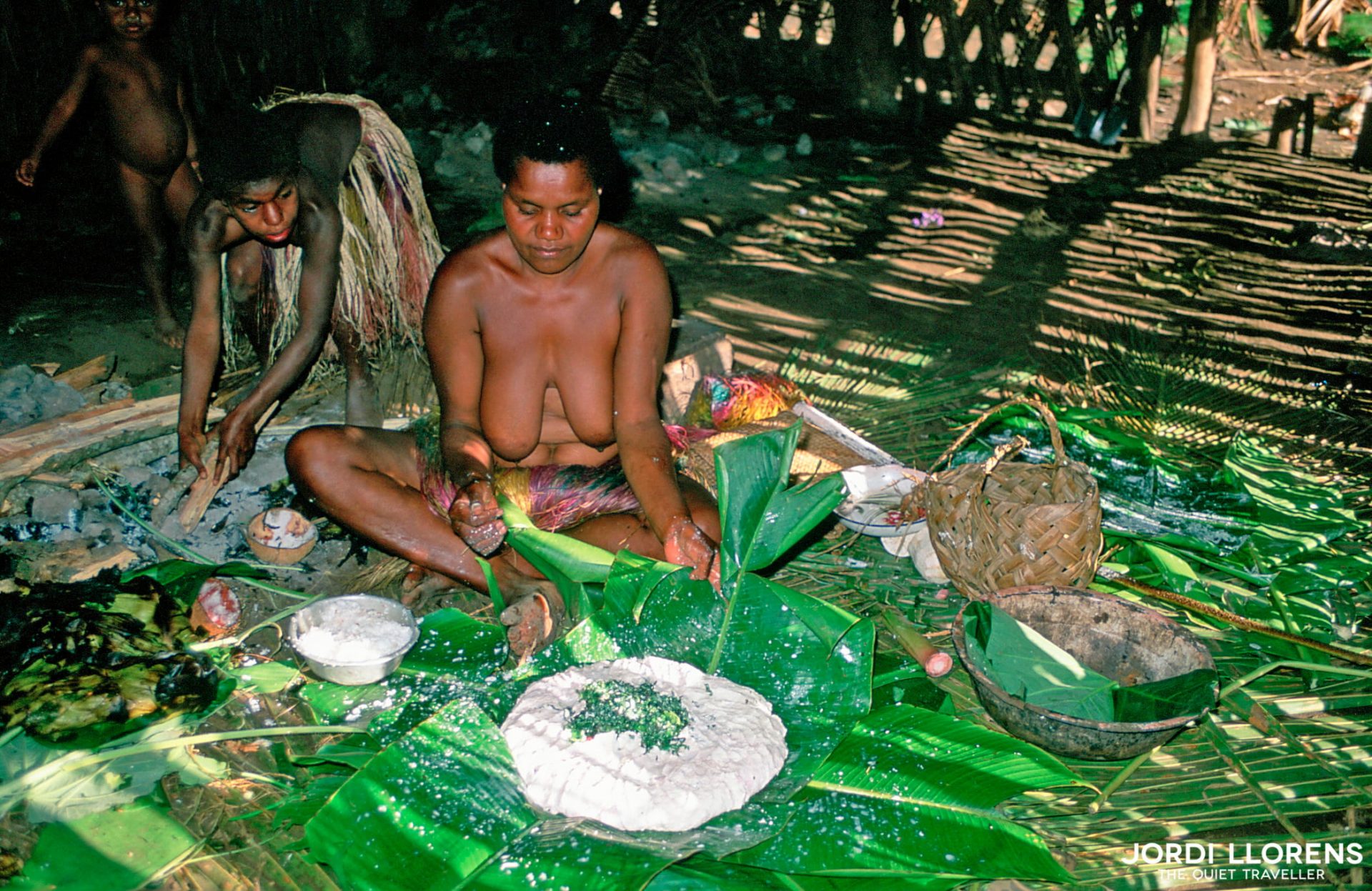
Preparing food
The fear of the unknown passed into oblivion among those simple people who welcomed me into their homes with the utmost hospitality. They say that the basis of their culture is peace and respect, and it is true that they live in peace and harmony: living together in peace is a top priority for them.
Religion and language
His religion is based on totemism and ancestors. They believe that death only comes when you are old. When the person who dies is a young person, they consult with the spirits that are the ones who have seen him die and believe that if he has died it is because of witchcraft.
They don’t speak Bislama, just their local language, they can’t read or write, even the day they were born.
They even ask me if it also rains in my country. They say that they have wanted to preserve their traditions and never stop wearing nambas, that is why they do not want to take their children to school, because they are afraid that they will instill in them that theirs is not a way of life and also the traditions of their ancestors are bad. .
In search of fire
The day to day of the namba man is to be stretched out all day in the nakamal without doing anything, sometimes they suggest you go to the river to fish for shrimp that they find under the stones and then cook and taste them. How? rubbing an old trunk until smoke comes out and they manage to make a fire with the dry leaves. Then with a twig they have made a skewer to which they stick the prawns that are ready in an hour but delicious, really. Hard to believe that in the era of social networks there are still communities that make fire as in Stone Age times.
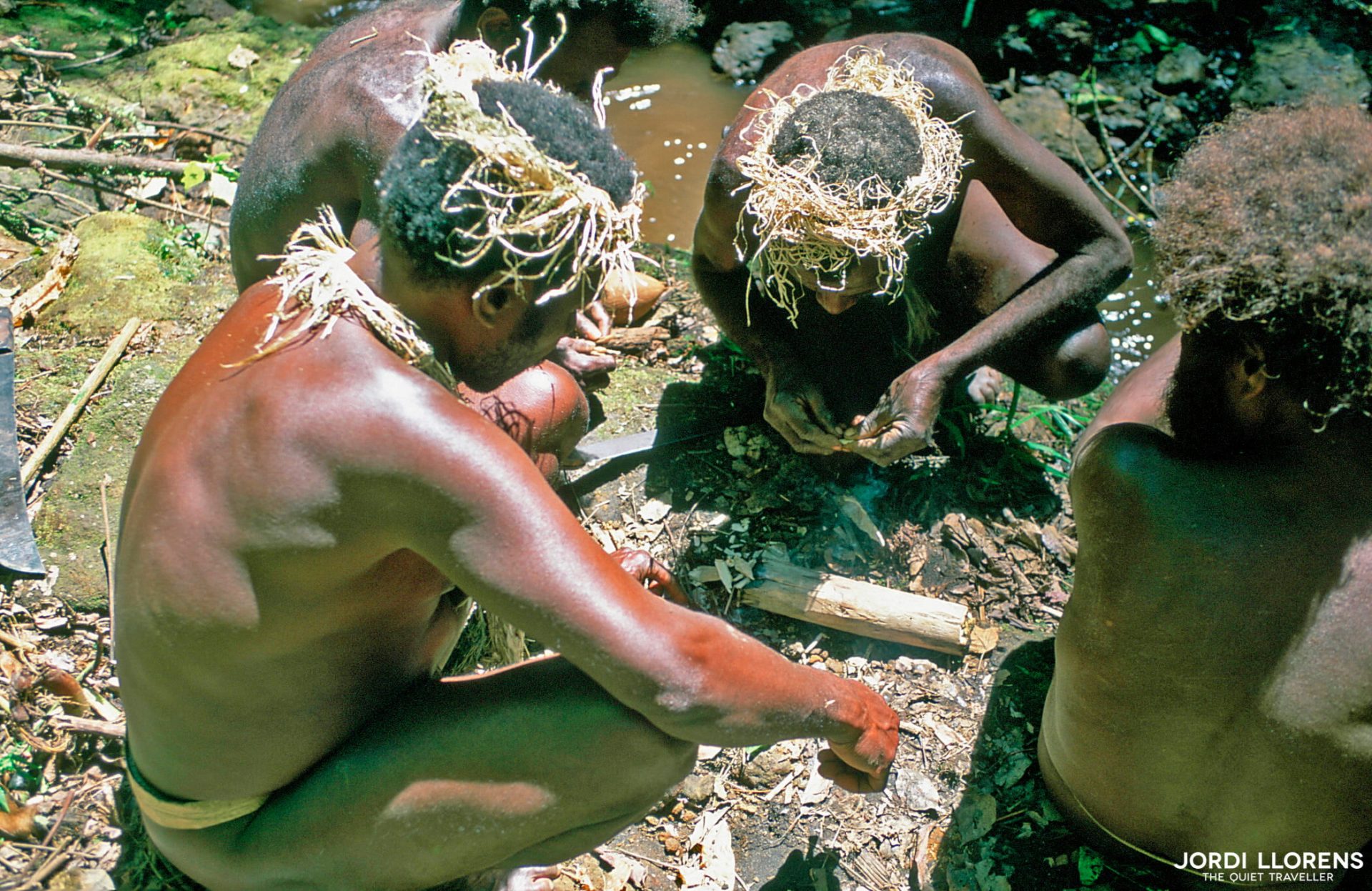
Preparing the fire

The freshly caught prawns
Kava ceremony
After dark it is time for the kava ritual. Kava is a ritual drink made from the dried roots of the pepper plant (Piper methyscum) that is ingested as a concoction at all kinds of social events, mainly in the Melanesian culture. When you arrive in a village, the protocol requires you to visit the chief of the tribe and to show our respect, offering the dried kava root.
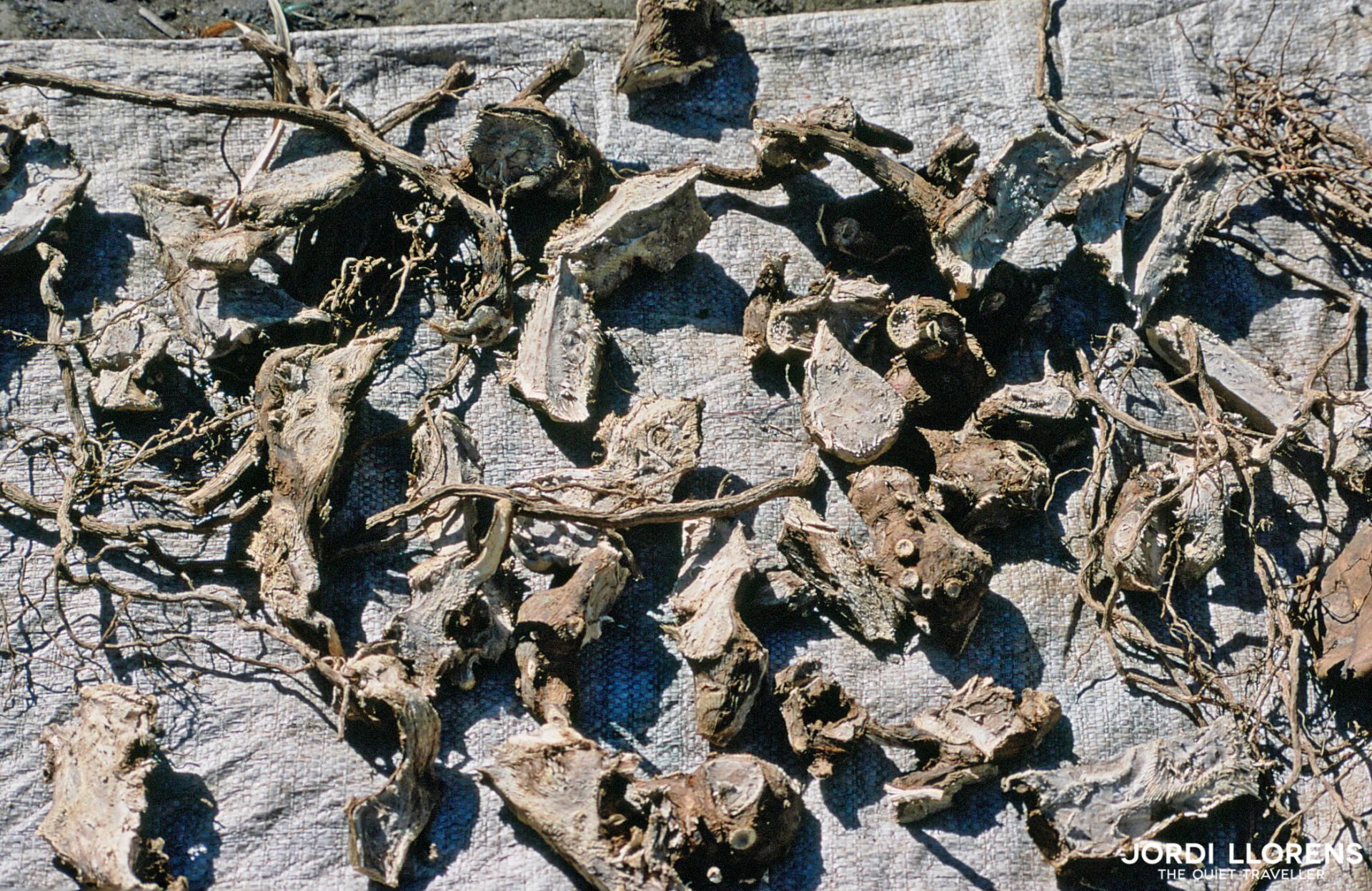
The root of the kava plant
For them it is the traditional way they have to communicate with their ancestors. Its preparation takes time. The children clean the root and chew it until they get a juice. Only those who had not have sexual relations with women could chew, because married people could spread sexual diseases that women have transmitted to them. Then they spit it out on a leaf and with water they drain the leaves on tree bark and the resulting liquid is kava. The first to drink it is the chief, in a single gulp and when he finishes they start shouting so that the neighboring villages know that it is time for the ritual. As a courtesy, it must be tasted having a very bitter taste. After the ceremony they fall asleep and sleep until the next morning. Only men are allowed to drink it. Kava is currently gaining recognition as a medicine.
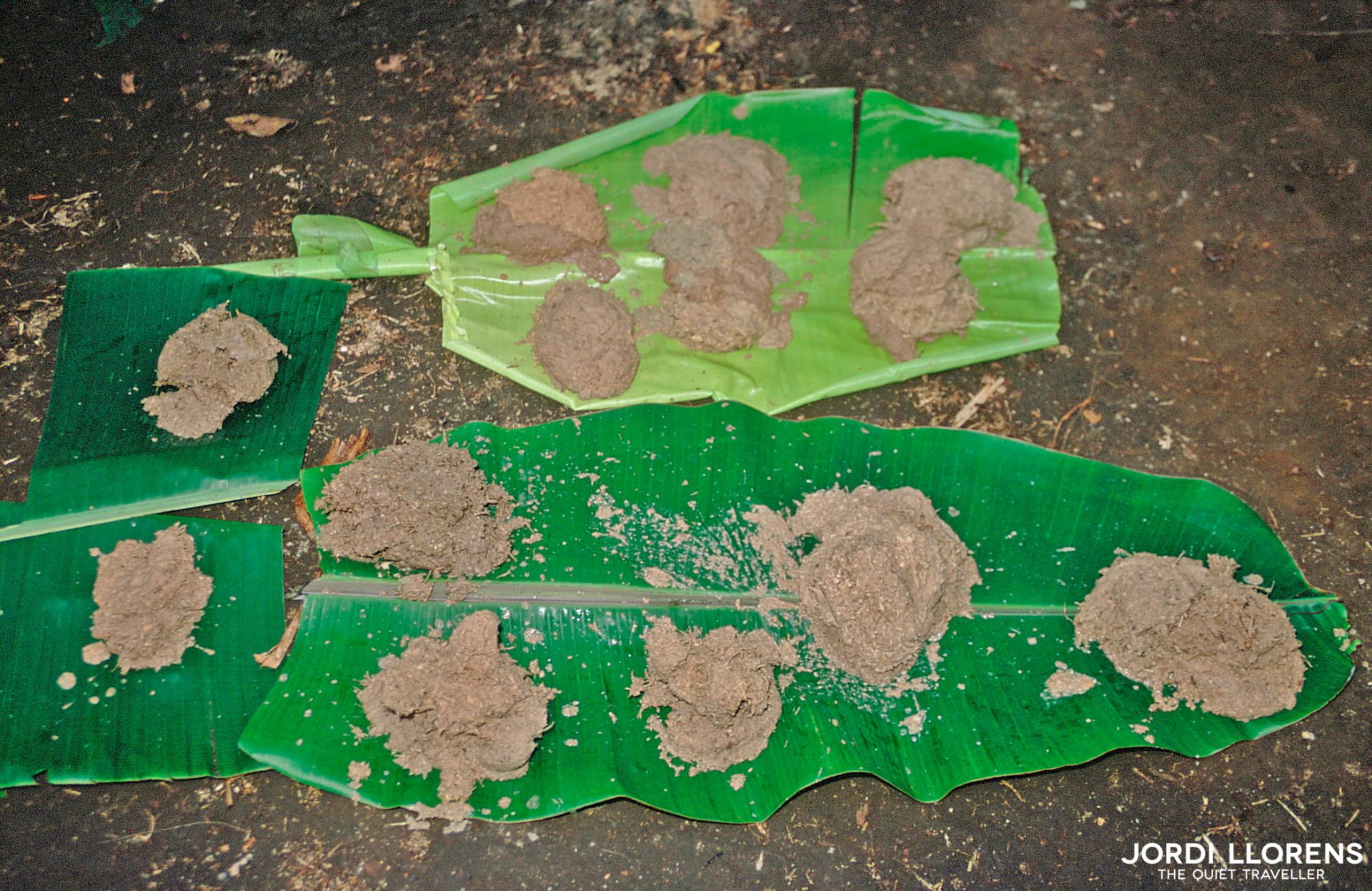
The kava already crushed ready to mix with water
The farewell
Farewell was difficult. They gave me gifts like a palm rug and two chickens. What extraordinary people! In the end I got excited after living with them for a few days. We have so much to learn from these people, from these cultures so far from the world in which we live that the message they can give us is that they are 21st century societies, like ours, equally dynamic and, above all, with the same right to live in peace.

Farewell with my friend Jomson, my guide during my stay
Knowing live how our ancestors lived was not a utopia even though we are in the 21st century. The universal language of gestures allowed me to communicate effectively.
Ethnic groups are synonymous with culture and the variety found in our world is truly wide, knowing through their knowledge and experiences is nothing more than nurturing our own life, which transcends towards personal evolution.
